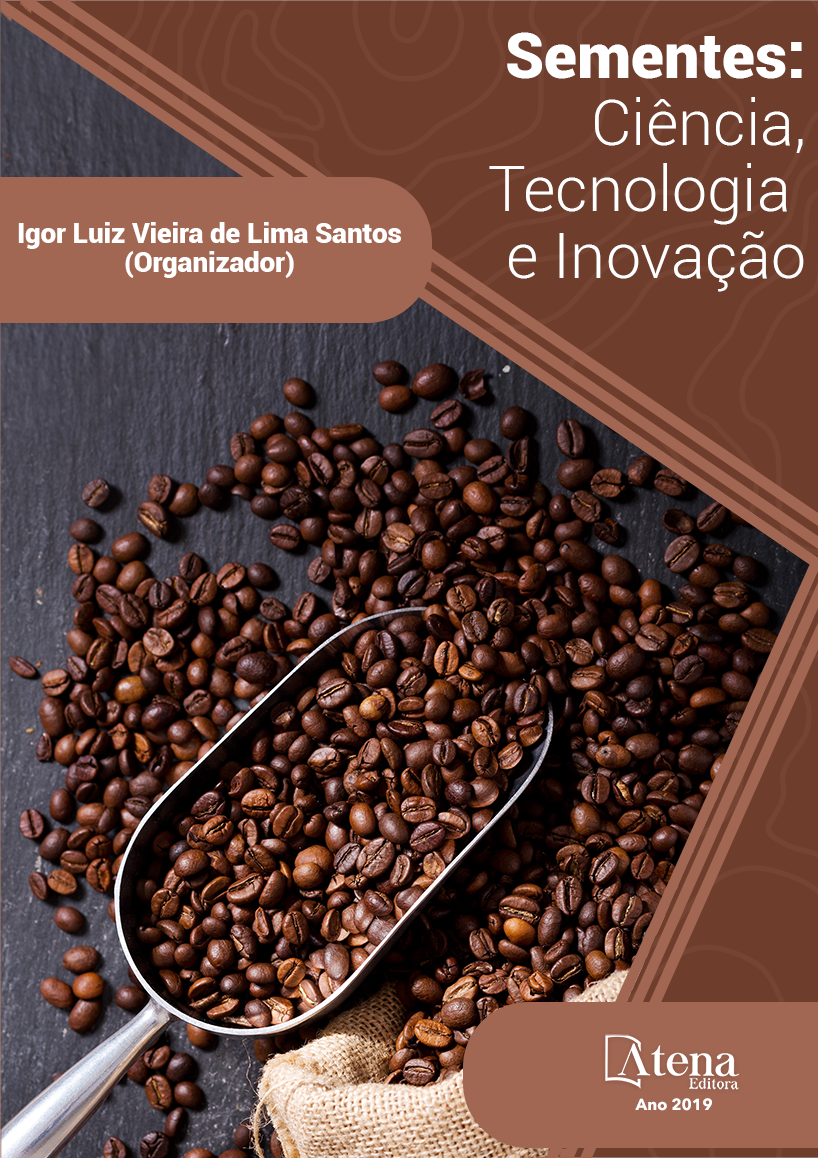
DISCRIMINAÇÃO ISOTÓPICA DO 15N EM N2 FIXADO NA SOJA EM FUNÇÃO DE CULTIVARES E ESTIRPES DE BRADYRHIZOBIUM SPP
A técnica mais utilizada para a
quantificação da contribuição da fixação
biológica de nitrogênio (FBN) em leguminosas
é a abundância natural de 15N. Quando se faz
o uso dessa técnica, é necessário determinar o
valor ‘B’, que é o valor da abundância natural do
15N do N na leguminosa derivada da FBN. Essa
determinação se torna importante para a cultura
da soja, que obtém altas proporções do seu N, a
partir do processo da FBN, em solos com baixos
teores de N. O objetivo do experimento foi de
conferir a fixação de N2 de duas estirpes de B.
diazoefficiens, uma estirpe de B. japonicum e
seis estirpes de Bradyrhizobiu. elkanii e a
abundância natural de 15N do N2 fixado pelas
estirpes em simbiose com três cultivares de
soja. Para avaliar o valor ‘B’ da FBN resultante
da simbiose entre as cultivares (cv) de soja
BRS 133, BRS 184, MONSOY9144 e nove
estirpes de Bradyrhizobium, o cultivo da soja
foi realizado em vasos Leonard, utilizando
substrato de areia e perlita na proporção 1:1
(v/v). Quarenta e sente dias após o plantio,
as plantas foram colhidas e calculou-se
valor ‘B’. As cultivares não diferiram entre si no
valor ‘B’ da parte aérea (‘Bpa’). Mas os ‘Bpa’ das
plantas inoculados com B. elkanii mostraram
uma tendência de abundância de 15N ser menos
negativa do que no caso da inoculação com B.
diazoefficiens e B. japonicum. Os valores ‘B’ da
planta inteira da inoculação com B. elkanii foram
muito semelhantes aos dos B. diazoefficiens e
B. japonicum; e em todos os casos menos de
1 delta (‰) diferente de zero para abundância
natural. Este estudo não apoia a hipótese
de que há um fracionamento isotópico no
processo da fixação de N2 pela simbiose soja/
Bradyrhizobium.
DISCRIMINAÇÃO ISOTÓPICA DO 15N EM N2 FIXADO NA SOJA EM FUNÇÃO DE CULTIVARES E ESTIRPES DE BRADYRHIZOBIUM SPP
-
DOI: 10.22533/at.ed.9761903091
-
Palavras-chave: Abundância natural de 15N; valor ‘B’; fracionamento isotópico.
-
Keywords: 15N natural abundance; ‘B’ value; Isotopic fractionation.
-
Abstract:
The most used technique for the quantification of the contribution of
biological nitrogen fixation (BNF) in legumes is the natural abundance of 15N. When
using this technique, it is necessary to determine the value ‘B’, which is the natural
abundance value of 15N of N in the legume derived from the BNF. This determination
becomes important for the soybean crop, which obtains high proportions of its N, from
the BNF process, in soils with low N contents. The objective of the experiment was to
check the N2 fixation of two B. diazoefficiens strains, one B. japonicum strain and six
B. elkanii strains, and the natural 15N abundance of N2 fixed by the strains symbiosis
with three soybean cultivars. To evaluate the ‘B’ value of the BNF resulting from the
symbiosis between cultivars (cv) soybean BRS 133, BRS 184, MONSOY9144 and
nine strains of Bradyrhizobium. Soybean plants for all treatments were grown under
equal conditions, soybean cultivation was carried out in Leonard pots using sand
substrate and perlite in the proportion 1: 1 (v / v). Forty days after planting, the plants
were harvested and a ‘B’ value was calculated. The cultivars did not differ in the ‘B’
value of the aerial part (‘Bpa’). But the ‘Bpa’ of plants inoculated with B. elkanii showed
a tendency of abundance of 15N to be less negative than in the case of inoculation
with B. diazoefficiens and B. japonicum. The ‘B’ values of the whole plant of B. elkanii
inoculation were very similar to those of B. diazoefficiens and B. japonicum; and in all
cases less than 1 delta (‰) other than zero for natural abundance. This study does not
support the hypothesis that there is isotopic fractionation in the N2 fixation process by
soybean/Bradyrhizobium symbiosis.
-
Número de páginas: 15
- Karla Emanuelle Campos Araujo
- Carlos Vergara
- Robert Michael Boddey
- Segundo Urquiaga


